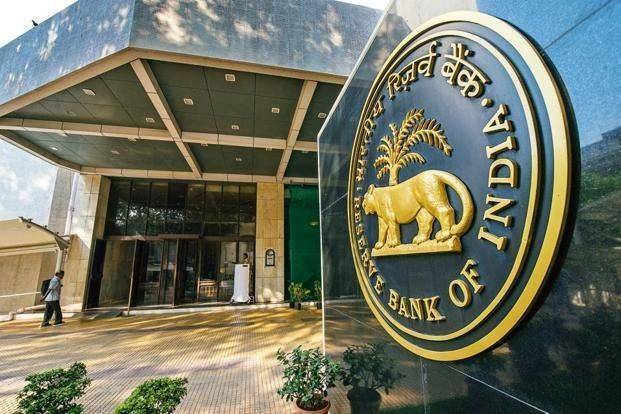The Reserve Bank of India (RBI) has introduced new regulations to tighten the operational norms for Housing Finance Companies (HFCs), aligning them with the more stringent guidelines that govern Non-Banking Financial Companies (NBFCs). This move is part of the central bank’s ongoing efforts to harmonize the regulatory framework across various financial institutions, ensuring a more robust and stable financial system.
Key Changes in HFC Norms
One of the most significant changes introduced by the RBI is the reduction in the ceiling on the quantum of public deposits that an HFC can hold. Previously, HFCs were permitted to hold public deposits up to three times their Net Owned Fund (NoF). However, under the new regulations, this ceiling has been cut to 1.5 times their NoF. This adjustment is expected to curb excessive risk-taking by HFCs, aligning their deposit acceptance limits with those of NBFCs, thereby reducing potential vulnerabilities in the financial sector.
Impact on Deposit-Taking HFCs
Deposit-taking HFCs that currently hold deposits exceeding the new limit will not be allowed to accept fresh deposits or renew existing ones until they conform to the revised norms. However, the RBI has provided some relief by allowing these excess deposits to run off until maturity, rather than requiring immediate action to reduce the deposit base. This measure is intended to prevent disruption in the operations of HFCs while ensuring that they gradually align with the new regulations.
Furthermore, the RBI has mandated an increase in the liquid assets that HFCs must maintain against their public deposits. Previously, HFCs were required to hold liquid assets equivalent to 13% of their public deposits. The new guidelines require this ratio to be raised to 15%, implemented in a phased manner. Specifically, by January 1, 2025, HFCs must maintain liquid assets equivalent to 14% of their public deposits, with the requirement increasing to 15% by July 2025. This increase in liquid asset requirements is intended to enhance the liquidity buffers of HFCs, ensuring they can meet their obligations to depositors even in times of financial stress.
Alignment with NBFC Regulations
In addition to the changes in deposit acceptance and liquidity requirements, the RBI has also introduced several other measures to align HFC regulations with those governing NBFCs. For example, HFCs are now required to ensure that full asset cover is available for their public deposits at all times. If an HFC’s asset cover falls short of its liability on account of public deposits, it must inform the National Housing Bank (NHB) promptly. This measure is designed to enhance transparency and ensure that HFCs maintain sufficient assets to cover their deposit liabilities.
Moreover, the RBI has revised the maturity limits for public deposits accepted by HFCs. Under the new guidelines, HFCs can only accept or renew public deposits that are repayable after a period of 12 months or more, but not later than 60 months. This is a tightening of the previous regulations, which allowed for deposit maturities of up to 120 months. Existing deposits with maturities beyond 60 months will be allowed to run their course as per their original terms, but no new deposits with such long maturities will be accepted.
Operational and Risk Management Enhancements
The RBI has also extended several other regulations that apply to NBFCs to HFCs. For instance, HFCs will now be subject to the same regulations as NBFCs concerning the establishment of branches and the appointment of agents for deposit collection. Additionally, HFCs must now set board-approved internal limits on direct investments in unquoted shares of other companies that are not subsidiaries or part of the same group.
Another significant development is the RBI’s decision to allow HFCs to hedge the risks arising from their operations by participating in various financial markets. HFCs can now hedge their currency risks by participating in currency future exchanges. Non-deposit-taking HFCs with an asset size of ₹1,000 crore or more are also permitted to participate in currency options exchanges. Furthermore, all HFCs can now participate in interest rate future exchanges, and non-deposit-taking HFCs with over ₹1,000 crore in assets are allowed to participate in interest rate futures markets as trading members.
The RBI has also opened the door for HFCs to participate in the credit default swaps (CDS) market, albeit with certain restrictions. HFCs are allowed to buy credit protection to hedge their credit risk on corporate bonds they hold but are not permitted to sell protection, thus preventing them from taking on additional risk. They are allowed to exit bought CDS positions by unwinding them with the original counterparty or assigning them to another eligible market participant under specific conditions.
Strategic Implications for the Financial Sector
These new guidelines are expected to have far-reaching implications for the financial sector. By tightening the regulations for HFCs, the RBI aims to create a level playing field between HFCs and NBFCs, reducing regulatory arbitrage and ensuring that all financial institutions operate under a similar set of rules. This harmonization is likely to enhance the overall stability of the financial system, as it reduces the risk of regulatory gaps that could be exploited by financial institutions.
For HFCs, these changes will require a careful reassessment of their business strategies, particularly in terms of deposit mobilization and risk management. The increased liquidity requirements and stricter deposit acceptance limits may lead to a more cautious approach in expanding their deposit base. However, the ability to participate in financial markets for hedging purposes provides HFCs with new tools to manage their risks more effectively.
Conclusion
The RBI’s decision to tighten the norms for HFCs and bring them in line with NBFC regulations is a significant step towards strengthening India’s financial regulatory framework. By reducing the ceiling on public deposits, increasing liquidity requirements, and extending operational and risk management regulations, the RBI aims to ensure that HFCs operate in a more prudent and stable manner. These changes, while challenging for HFCs, are expected to enhance the resilience of the financial sector and contribute to long-term financial stability in the country.









.png)